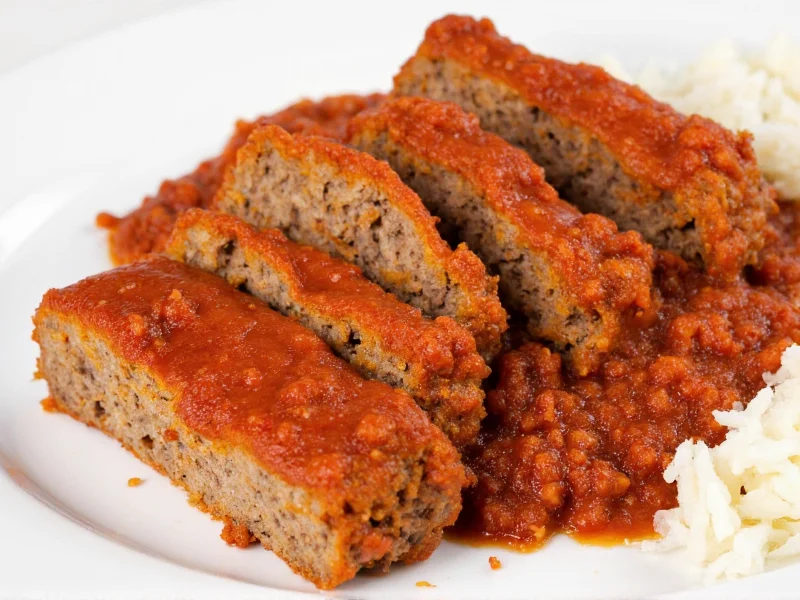Creating the perfect meatloaf depends heavily on your spice selection and proportions. The right blend enhances the meat's natural flavors while adding complexity and depth. Understanding which spices work best together and why they complement ground meat can transform your meatloaf from ordinary to extraordinary.
The Science Behind Meatloaf Spices
Spices interact with meat proteins and fats through chemical processes that develop flavor during cooking. The Maillard reaction—occurring when proteins and sugars brown at high temperatures—creates complex flavor compounds that work synergistically with added spices. Fat-soluble spices like paprika and cumin release their flavors gradually as the meat cooks, while water-soluble compounds in garlic and onion powders distribute more quickly throughout the mixture.
Meatloaf's dense structure requires spices that can penetrate throughout the mixture rather than just flavor the surface. This is why powdered spices generally work better than whole spices for meatloaf—they distribute more evenly and don't create concentrated pockets of intense flavor.
Essential Meatloaf Spices and Their Roles
Certain spices form the foundation of traditional meatloaf seasoning. These ingredients work together to create a balanced flavor profile that has stood the test of time:
- Salt - Enhances all other flavors and helps retain moisture
- Black pepper - Provides subtle heat and complexity
- Garlic powder - Adds savory depth without raw garlic's sharpness
- Onion powder - Contributes sweetness and aromatic qualities
- Paprika - Offers mild sweetness and rich color
- Dried thyme or oregano - Provides herbal notes that complement meat
Optimal Meatloaf Spice Ratios
Getting the proportions right is crucial—too little and the meatloaf tastes bland; too much and individual spices dominate rather than complement. The following table shows the ideal meatloaf spice measurements per pound of ground meat:
| Spice | Minimum Amount | Optimal Amount | Maximum Amount |
|---|---|---|---|
| Salt | 3/4 tsp | 1 tsp | 1 1/4 tsp |
| Black pepper | 1/4 tsp | 1/2 tsp | 3/4 tsp |
| Garlic powder | 3/4 tsp | 1 tsp | 1 1/4 tsp |
| Onion powder | 3/4 tsp | 1 tsp | 1 1/4 tsp |
| Paprika | 1/2 tsp | 1 tsp | 1 1/2 tsp |
| Dried thyme | 1/4 tsp | 1/2 tsp | 3/4 tsp |
| Worcestershire sauce | 1 tbsp | 1-2 tbsp | 2 tbsp |
Supporting Spices for Flavor Variation
Once you've mastered the basic meatloaf spice blend, consider these complementary additions for different flavor profiles:
- For smoky depth: Add 1/2 teaspoon smoked paprika or a few drops of liquid smoke
- For warmth: Include 1/4 teaspoon ground mustard and 1/8 teaspoon cayenne pepper
- For Italian flair: Increase oregano to 3/4 teaspoon and add 1/2 teaspoon basil
- For umami boost: Incorporate 1 teaspoon tomato paste or 1/2 teaspoon mushroom powder
- For sweet-savory balance: Mix in 1 tablespoon ketchup or 2 teaspoons brown sugar
When experimenting with additional spices, remember that meatloaf benefits from subtle complexity rather than bold, competing flavors. Introduce new elements one at a time to understand their impact on the overall taste profile.
Fresh vs. Dried Spices: What Works Best
While dried spices are traditional for meatloaf, fresh herbs can add brightness when used judiciously. Here's how to incorporate both effectively:
- Dried spices - Ideal for the meat mixture itself as they distribute evenly and withstand baking temperatures
- Fresh herbs - Best added to the glaze or sprinkled on top during the last 15 minutes of cooking
- Fresh garlic and onion - Can be used in place of powders but should be very finely minced to avoid texture issues
If substituting fresh for dried herbs, use three times the amount (1 tablespoon fresh = 1 teaspoon dried). However, for meatloaf specifically, dried herbs generally provide more consistent flavor distribution throughout the dense mixture.
Common Meatloaf Spice Mistakes to Avoid
Even experienced cooks make these spice-related errors that compromise meatloaf flavor:
- Over-spicing - Adding too many different spices creates flavor confusion rather than harmony
- Under-seasoning - Meat requires more seasoning than you might expect due to its density
- Using old spices - Spices lose potency after 6-12 months; stale spices won't deliver proper flavor
- Adding spices to hot pan - Blooming spices in oil works for sauces but not for raw meat mixtures
- Uneven distribution - Not mixing spices thoroughly with the meat creates inconsistent flavor pockets
Always mix your spices with a small portion of the meat first to ensure even distribution before combining with the remaining ingredients. This technique prevents clumping and guarantees consistent seasoning throughout.
Adjusting Spices for Dietary Needs
Meatloaf can accommodate various dietary requirements while maintaining great flavor:
- Low-sodium diets: Reduce salt by 25-50% and compensate with extra herbs, garlic, onion, and umami-rich ingredients like mushrooms
- Gluten-free: Worcestershire sauce often contains gluten; substitute with gluten-free version or additional soy sauce/tamari
- Spice sensitivity: Reduce black pepper and eliminate cayenne; increase paprika for color without heat
- Enhanced flavor for older adults: Slightly increase herbs and spices to compensate for diminished taste sensitivity
Remember that binding ingredients like breadcrumbs also affect spice perception—more breadcrumbs will dilute the seasoning, requiring slight adjustments to maintain proper flavor balance.
Perfecting Your Meatloaf Spice Blend
The journey to the perfect meatloaf spice combination involves understanding how different elements work together. Start with the foundational blend, then make small adjustments based on your preferences. Keep notes on your spice ratios and results to refine your personal signature blend over time.
For the most consistent results, measure spices precisely rather than estimating. Consider making a larger batch of your favorite spice blend and storing it in an airtight container—this ensures consistent seasoning and simplifies the meatloaf preparation process. Properly stored in a cool, dark place, your homemade meatloaf seasoning will maintain its potency for 3-6 months.











 浙公网安备
33010002000092号
浙公网安备
33010002000092号 浙B2-20120091-4
浙B2-20120091-4